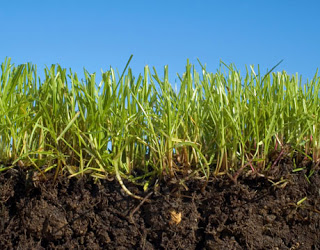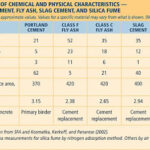Contents
- Why soil classification?
- Soil Classification Systems
- Test Required for Classification of Soil according to AASHTO
- Introduction to AASHTO Classification System:
- What is Group Index?
- Some Rules about Group Index
- Group Index Method Example
- Solution of the Example of Soil Classification According to AASHTO;
- Calculation of Group Index
Subscribe Us on YouTube!
Similarly soil might contain clay, silt, sand and gravel.
 |
||
| Soil Classification |
Why soil classification?
The particles above gravels are identified as rocks and are generally not considered as a soil.
Soil classification is primarily based on the size of particles.
The purpose of soil classification is to arrange soil into groups and label them according to certain characteristics and engineering behavior.
The name of the group gives useful information about the behavior of soil as a construction material and foundation support.
Although soil classification apparently gives very useful information about soil behavior and about some of its properties but it doesn’t eliminate the requirement of in-detail study of soil behavior and study of properties like:
- shear strength
- unit weight
- compaction characteristics
- degree of saturation
- susceptibility to frost action
Soil Classification Systems
Different organizations from around the world have made systems to classify the soil according to their requirements like some agricultural department, highway department, building department, aviation department etc.
Two of the most commonly used soil classification systems are
- USCS – Unified Soil Classification system – which is mostly used for buildings and for structures where soil will be used to support foundations or footings
- AASHTO (American Association for State Highway and Transportation officials) soil classification system
In this post we will be classifying the soil according to AASHTO Soil classification system, USCS will be discussed in some other post in detail.
Test Required for Classification of Soil according to AASHTO
As we will be trying to classify the soil in the laboratory thus we will use results of some tests to classify the soil;
Tests include;
(a) Liquid limit and Plastic limit tests – Atterberg limit results
(b) Plastic size analysis test
Introduction to AASHTO Classification System:
This system of classification is based upon the observed field performance of soils under highway pavements (flexible and rigid) and is widely used around the world for highway and airfield construction.
Soils which have same general load carrying capacity i.e. bearing capacity and serviceability characteristics are grouped together and classified into eight groups from A1 to A8
A-1, A-2 and A-3 soils are coarse-grained soils While A-4, A-5, A-6 and A-7 represent the fine grained soils. A-8 includes Peat, muck, and other highly organic soils.
A-1 soil is best to use as sub-grade then a-2 and so on. And poorest is A-7 soil.
What is Group Index?
To check the quality of the soil, a term group index is defined. Higher the G.I weaker will be the soil, a soil having G.I of 20 is considered as poorest soil overall.Following is the formula for Calculating G.I
GI = (F200 – 35) [0.2 + 0.005(LL-40)] + 0.01 (F200 – 15)(PI-10)
Where
F200 = %age passing for sieve no. 200 (0.075 mm) expressed as whole number
PI is plasticity Index where PI = LL – PL
And LL is liquid limit and PL is plastic limit
Some Rules about Group Index
If Group Index for your soil comes out to be negative take it as zero
Group index is expressed as rounded whole number
No upper limit can be any integer
For soils A-2-6 and A-2-7 following Group Index formula should be used;
G.I = 0.01(F200-15)(PI-10)
Soil is represented as A-4(5) where A-4 is soil type and Group Index is 5
Group Index Method Example
An inorganic Soil sample was tested in the laboratory for classification and the following results were obtained.
Liquid Limit = 44%
Plastic Limit = 18%
The results of Sieve analysis are as follows;
Sieve Size (percentage Passing)
No. 4 (100)
No. 10 (93.2)
NO. 40 (81.0)
No. 200 (60.2)
Required Classify the Soil according to AASHTO Classification System
Solution of the Example of Soil Classification According to AASHTO;
Plasticity Index (P.I) = L.L – P.L = 44 – 18 = 26
Note: If L.L is less then plastic limit then mark the soil as non-plastic in other words if plasticity index comes out to be negative the soil is non-plastic;
As more then 35 % particles passes sieve # 200 thus the soil comes out to be A-4 to A-7 having silty clayey particles,
Now let us check the L.L and P.I ;
L.L is 44 and P.I is 26
as LL is 44 it doesn’t satisfy 40 max criteria thus our soil can be A-5 or A-7
as our P.I is 26 which satisfies 11 min criteria thus our soil is A-7
as A7 is further subdivided into A-7-5 and A-7-6 groups
as our P.L is 18 which is less than 30% thus our soil is A-7-6
Calculation of Group Index
GI = (F200 – 35) [0.2 + 0.005(LL-40)] + 0.01 (F200 – 15)(PI-10)
GI = (60 – 35) [0.2 + 0.005(44-40)] + 0.01 (60 – 15)(26-10)
G.I = 12.7 = 13 thus
Result:
Our soil is A-7-6 (13)
















